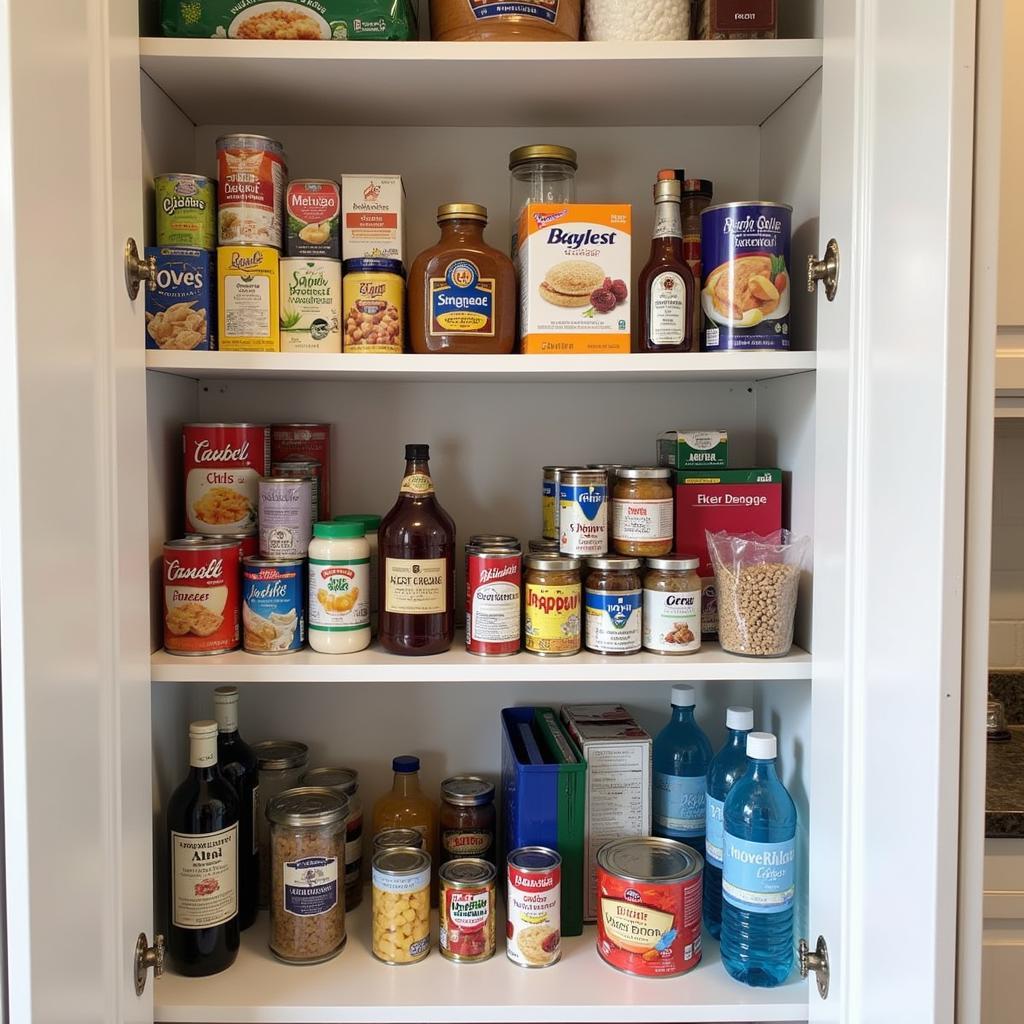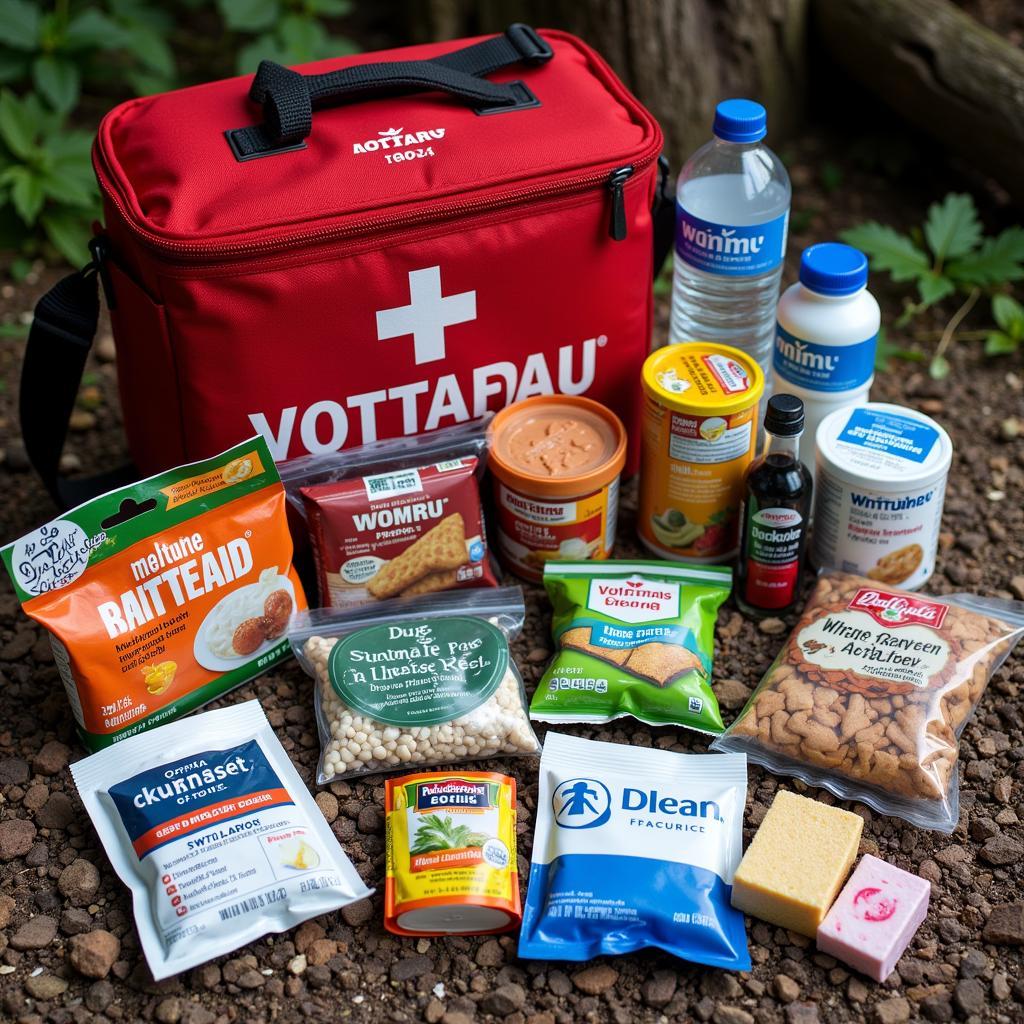Having a Two Week Emergency Food Supply on hand can provide peace of mind in uncertain times. Whether it’s a natural disaster, power outage, or unexpected crisis, knowing you have enough food and water for your family can make a significant difference. This guide will walk you through the essentials of creating a comprehensive two-week emergency food supply.
Understanding the Importance of a Two Week Emergency Food Supply
While having a three-day emergency kit is often recommended, a two-week supply provides a greater safety net. It allows for longer-term disruptions and gives you more time to assess the situation, seek support, and adapt to changing circumstances.
 Two Week Emergency Food Supply
Two Week Emergency Food Supply
Essential Food Items for Your Emergency Supply
When assembling your two-week food supply, prioritize shelf-stable, nutrient-rich items that require minimal preparation. Some key categories to include are:
1. Water:
The most crucial element. Aim for one gallon per person per day for drinking and sanitation.
2. Non-Perishable Staples:
Stock up on items like:
- Canned goods (fruits, vegetables, soups, beans, tuna, chicken)
- Dry foods (rice, pasta, oatmeal, cereal, powdered milk)
- Protein bars and trail mix
- Peanut butter and jelly
3. Comfort Foods:
Include items that can provide comfort and boost morale during stressful times, such as:
- Coffee, tea, hot chocolate
- Hard candies
- Comforting snacks
 Comfort Food for Emergencies
Comfort Food for Emergencies
Planning Your Two Week Menu
To avoid food waste and ensure you have enough variety, it’s helpful to create a two-week meal plan using your stored supplies. Consider dietary needs and preferences of everyone in your household.
Sample Two Week Menu:
This is a basic example, and you can customize it based on your preferences and dietary needs.
Week 1:
- Day 1: Oatmeal with dried fruit and nuts, canned fruit cocktail
- Day 2: Canned soup and crackers, peanut butter and jelly sandwiches
- Day 3: Rice and beans, canned vegetables
- Day 4: Tuna salad sandwiches, canned fruit
- Day 5: Pasta with canned tomato sauce and canned meat
- Day 6: Peanut butter and banana sandwiches, trail mix
- Day 7: Leftovers or pantry staples
Week 2:
- Day 8-14: Repeat Week 1 menu or use similar combinations with available supplies
Remember to utilize any fresh produce or perishable items you have on hand first before relying solely on your emergency food supply.
Storing Your Emergency Food Supply Properly
Proper storage is essential to maintain the quality and safety of your emergency food supply.
Tips for Safe Storage:
- Store food in a cool, dry, and dark place.
- Keep food off the floor to prevent pest infestations.
- Use airtight containers to keep food fresh and prevent spoilage.
- Check expiration dates regularly and rotate your stock using the FIFO (First In, First Out) method.
Additional Considerations for Your Two Week Emergency Food Supply
- Special Dietary Needs: If anyone in your household has allergies, intolerances, or follows a specific diet (vegetarian, vegan, gluten-free), ensure you have appropriate food options for them.
- Infants and Pets: Don’t forget to include formula, baby food, pet food, and any other necessities for infants and pets.
- Cooking and Sanitation: Pack a manual can opener, utensils, a camp stove, and fuel. Hand sanitizer, soap, trash bags, and toilet paper are also crucial.
- First Aid Kit: Keep a well-stocked first-aid kit readily available.
- Important Documents: Store copies of essential documents (identification, insurance information) in a waterproof container.
 Emergency Preparedness Kit
Emergency Preparedness Kit
Conclusion
Building a two-week emergency food supply is a proactive step towards ensuring your family’s well-being during uncertain times. By choosing the right food items, storing them correctly, and considering the additional factors mentioned above, you’ll be well-prepared to face unexpected situations with greater confidence. Remember, being prepared empowers you and your loved ones to navigate challenging circumstances with greater resilience.
FAQs About Two Week Emergency Food Supplies
1. How much water should I store for a two-week emergency supply?
It’s recommended to store at least one gallon of water per person per day for a two-week period.
2. Can I include comfort foods in my emergency food supply?
Absolutely! Comfort foods can help boost morale during stressful times. Consider including items like coffee, tea, hard candies, and comforting snacks.
3. How often should I rotate my emergency food supply?
It’s essential to check expiration dates regularly and rotate your stock using the FIFO (First In, First Out) method to ensure freshness.
4. What should I do if someone in my household has special dietary needs?
Make sure to have appropriate food options available for anyone with allergies, intolerances, or specific dietary requirements.
5. Where should I store my two-week emergency food supply?
Store your emergency food supply in a cool, dry, and dark place, ideally off the floor to prevent pest infestations.
For any inquiries or assistance in building your emergency food supply, reach out to us at Mina Cones Food. You can call us at 02437655121, email us at minacones@gmail.com, or visit us at 3PGH+8R9, ĐT70A, thôn Trung, Bắc Từ Liêm, Hà Nội, Việt Nam. Our dedicated team is available 24/7 to provide you with the necessary support and guidance.
If you’d like to explore other aspects of emergency preparedness, we recommend checking out our articles on food bucket survival, survival foods and supplies, and survival storage food. You can also find information about local resources, such as food banks in Olathe KS on our website.